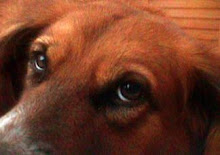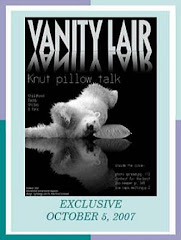Marga hat Recht, ein unglaublicher Fund!Durch den glücklichen Fund eines unteren Eisbärkieferknochens 2004 in Svalbard durch den isländischen
Geologen Ólafur Ing
ólfsson von der University of Iceland, konnte erstmalig durch DNA Tests nachgewiesen werden, dass Eisbären bereits schon vor 110000 -130000 Jahren gelebt haben müssen.
Diese Erkenntnis ist ein wahrer Durchbruch, denn der Ursprung von Eisbären konnte bislang aus Mangel an Fossilfunden nicht wirklich genetisch geklärt werden, da Eisbären nach ihrem Tod entweder häufig ihren Artgenossen als Nahrungsquelle dienen, oder durch andere Beutetiere oder Mikroben vertilgt werden, falls sie auf den Meeresgrund gesunken sind.
Schätzungen schwankten bislang zwischen 50000 bis zu 1 Mio. Jahren. Dieses Fossil ist doppelt so alt als das bislang älteste gefundene Fossil von einem Eisbären und die genetische Vergleichsanalyse eines Zahns mit 6 anderen analogen Fossilfunden belegt, dass dieser Eisbär an der Evolutionsschwelle gelebt haben muss, an der Eisbären sich von Braunbären eigenständig weiterentwickelten, da er Kennzeichen von beiden trägt. ...Hier der Originalartikel auf Englisch...

Early Polar Bear Discovered in Arctic Tundra
by Phil Berardelli on March 1, 2010 1:49 PM "Digging in the frozen tundra of Norway's Svalbard archipelago, scientists have uncovered the remains of the most ancient polar bear ever found. DNA analyses reveal that the bear—a mature male—lived about 120,000 years ago, at a time when wooly mammoths were also roaming the land. The work also shows that this bear represents something very rare in the fossil record: an evolutionary snapshot of one species turning into another. "This is the most exciting new development in polar bear research in recent years," says biologist and polar bear expert Ian Stirling of the University of Alberta in Edmonton.
The discovery of the fossil is a major breakthrough. Polar bears, which can weigh nearly 700 kilograms, spend most of their lives in the open ocean above the Arctic Circle, hiding atop ice floes and waiting for an unfortunate seal to take a break from swimming. When they die, polar bears are either torn apart by their comrades for food or sink to the sea bottom, where marine animals and microbes quickly dispose of their remains.
Consequently, scientists have lacked sufficient fossil or genetic evidence to determine when and where polar bears emerged, or how they developed their current preference for Arctic ice. Estimates for the date of their origins have ranged from 50,000 to over 1 million years ago. The new research "conclusively resolves a diversity of opinion about how recently polar bears evolved," says Stirling, who was not involved in the research.
The mystery has been solved thanks to a very lucky find. In 2004, Icelandic geologist Ólafur Ingólfsson of the University of Iceland was working on Svalbard. While studying sediment layers in the island's coastal cliffs, he accidentally discovered a lower jawbone belonging to a large predator. Ingólfsson gave the bone to researchers at the University of Oslo's Natural History Museum, who, along with colleagues, have studied it for several years. Based on its shape and chemistry, the researchers have determined that the jaw belonged to a bear that ate marine organisms. And its location in the sediment places its age at somewhere between 110,000 and 130,000 years old, which would make about twice as old as the oldest polar bear remains ever found.
But in order to figure out if the fossil truly represented a polar bear, the researchers needed DNA. They got it by drilling into a canine tooth in the jawbone and extracting fragments of mitochondrial DNA, the genetic material passed down directly from mother to child. That DNA identified the species as Ursus maritimus, the modern polar bear, the team reports online today in the Proceedings of the National Academy of Sciences. Mapping the complete mitochondrial genome for such an old specimen is "an impressive feat," says geneticist Eske Willerslev of the University of Copenhagen.
When the researchers compared the fossil's DNA with analogous DNA from six other specimens of living brown bears and polar bears, they detected genetic hallmarks of both species. That suggests that the fossil bear was one of the first polar bears to branch off from brown bears.
"It's a truly ancient polar bear," says lead author and geneticist Charlotte Lindqvist of the University at Buffalo in New York state. It must have lived close to the time when the species had split off from the so-called ABC brown bears, which inhabit three islands—Admiralty, Baranof, and Chichagof—in southeastern Alaska. Those bears are more closely related to polar bears than they are to other brown bears, she says.
The DNA evidence and the location of the find suggest that polar bears were just beginning to spread out across their Arctic habitat between the last two ice ages, when Earth's climate was warmer than it is today. In just 1000 generations or so, U. maritimus morphed from a stocky brown bear to a long-necked bear with thick fatty layers and that signature white coat. Lindqvist says the Svalbard area, north of the Arctic Circle and far from the competitors inhabiting the continental land masses, offered just the right refuge where the bears could persist through the warming period before the last ice age and then begin to adapt to a life amid the frozen sea."
Source : Early Polar Bear Discovered in Arctic Tundra/01.03.2010
Thanks to Marga I found this article.....but there was also an article already one year ago...I nearly forgot, see yourself!
Related:Eisbären früher auch in wärmeren Klimazonen- A study/13.02.2009,
see also Knutitis posting/11.02.2009
 Und hier ebenfalls zum Thema, ein Artikel mit dem schönen Titel Eisbären:Ein Dasein, kurz wie ein Wimpernschlag /von Bernhard Mackowiak (news.de 07.03.2010), das ddp Foto stammt aus dem Artikel.
Und hier ebenfalls zum Thema, ein Artikel mit dem schönen Titel Eisbären:Ein Dasein, kurz wie ein Wimpernschlag /von Bernhard Mackowiak (news.de 07.03.2010), das ddp Foto stammt aus dem Artikel.
 Lars, Knut's beautiful father
Lars, Knut's beautiful father Bathing Kea- click to see it in a bigger size...
Bathing Kea- click to see it in a bigger size...










































































